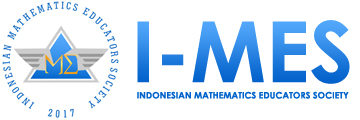Analysis of Student Computational Thinking in Solving Social Statistics Problems
Analysis of Student Computational Thinking in Solving Social Statistics Problems
DOI:
https://doi.org/10.35706/sjme.v5i1.4376Abstract
This study aims to see students' computational thinking in solving social statistics questions and to find out why students experience their mistakes. This type of research uses a descriptive qualitative approach. The subjects used in this study were Governmental Science students taking the Social Statistics course. Data collection techniques were carried out by observation and tests. The instruments used in this study were the observation sheet and the test question sheet. The analysis is carried out by reducing the data first, then presenting the data, and ending by concluding the results of the computational thinking indicator. The results showed that all aspects of computational thinking have been carried out by students, starting from Decomposition, Pattern Recognition, Abstraction, and Algorithm design. Students get the highest percentage, namely algorithm design with 84% and the lowest on decomposition with 65.5%. The cause of errors, in general, is because students are not used to completing in a structured manner. Students are accustomed to solving problems by directly substituting values into the formula without first writing down what is known and looking for what is needed in the questions first.
Downloads
References
Città, G., Gentile, M., Allegra, M., Arrigo, M., Conti, D., Ottaviano, S., Reale, F., & Sciortino, M. (2019). The effects of mental rotation on computational thinking. Computers and Education, 141(May). https://doi.org/10.1016/j.compedu.2019.103613
Durak, H. Y., & Saritepeci, M. (2018). Analysis of the relation between computational thinking skills and various variables with the structural equation model. Computers and Education, 116. https://doi.org/10.1016/j.compedu.2017.09.004
Gazali, R. Y. (2016). Pembelajaran Matematika Yang Bermakna. Math Didactic, 2(3), 181–190. https://doi.org/10.33654/math.v2i3.47
Kong, S. C., & Li, P. (2016). A case study illustrating coding for computational thinking development. ICCE 2016 - 24th International Conference on Computers in Education: Think Global Act Local - Main Conference Proceedings.
Kusumawardani, D. R., Wardono, & Kartono. (2018). Pentingnya Penalaran Matematika dalam Meningkatkan Kemampuan Literasi Matematika. Prisma, 1(1), 588–595.
Nafi’an, M. I. (2011). P – 53 Kemampuan Siswa Dalam Menyelesaikan Soal Cerita. Seminar Nasional Matematika Dan Pendidikan Matematika Jurusan Pendidikan Matematika FMIPA UNY, 978–979.
Nam, C.-M. (2011). An Analysis of Teaching and Learning Activities in Elementary Mathematics Based on Computational Thinking. Journal of Educational Research Institute, 13(2). https://doi.org/10.15564/jeri.2011.11.13.2.325
Olabe, J. C., Basogain, X., & Olabe, M. Á. (2019). Modern education with a computational model of the mind. ACM International Conference Proceeding Series. https://doi.org/10.1145/3371647.3371666
Rahman, F., & Dkk. (2011). Impact of Discussion Method on Students Performance. International Journal of Business and Social Science, 2(7), 84–94.
Swaid, S. I. (2015). Bringing Computational Thinking to STEM Education. Procedia Manufacturing, 3(Ahfe), 3657–3662. https://doi.org/10.1016/j.promfg.2015.07.761
Syarifah, L. L. (2017). Analisis Kemampuan Pemahaman Matematis Pada Mata Kuliah Pembelajaran Matematika Sma Ii. Jurnal Penelitian Dan Pembelajaran Matematika, 10(2), 57–71. https://doi.org/10.30870/jppm.v10i2.2031
Ulpah, M. (2009). Belajar Statistika: Mengapa dan Bagaimana? INSANIA : Jurnal Pemikiran Alternatif Kependidikan, 14(3), 325–435. https://doi.org/10.24090/insania.v14i3.354
Downloads
Published
Versions
- 2021-03-19 (2)
- 2021-01-29 (1)
How to Cite
Issue
Section
License

This work is licensed under a Creative Commons Attribution-ShareAlike 4.0 International License.
Authors who publish with this journal agree to the following terms:
- Authors retain copyright and grant the journal right of first publication with the work simultaneously licensed under a Creative Commons Attribution License that allows others to share the work with an acknowledgment of the work's authorship and initial publication in this journal.
- Authors are able to enter into separate, additional contractual arrangements for the non-exclusive distribution of the journal's published version of the work (e.g., post it to an institutional repository or publish it in a book), with an acknowledgment of its initial publication in this journal.
- Authors are permitted and encouraged to post their work online (e.g., in institutional repositories or on their website) prior to and during the submission process, as it can lead to productive exchanges, as well as earlier and greater citation of published work (See The Effect of Open Access).











